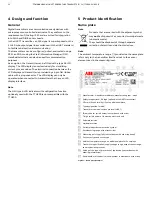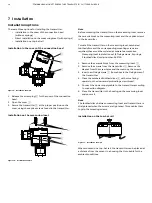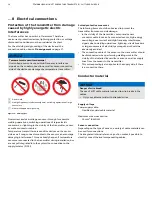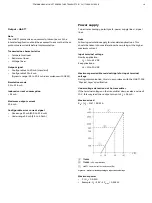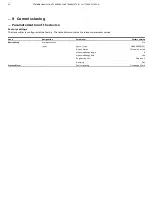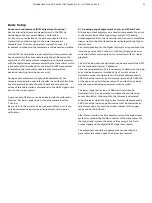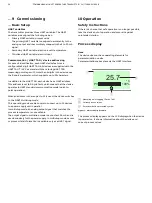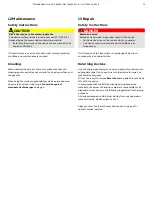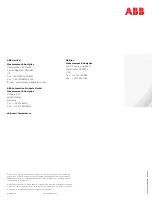
TTH200
HEAD-MOUNT TEMPERATURE TRANSMITTER | OI/TTH200-EN REV. B
25
Basic Setup
Sensor error adjustment (DTM adjustment function)
Sensor error adjustment can be performed in the DTM by
navigating to the menu path Device / Calibration.
For sensor error adjustment, the sensor connected to the
transmitter must be brought to the lower range value
temperature / Trim low using a water quench or oven. It is
important to make sure the temperature is balanced and stable.
In the DTM, check that the proper adjustment temperature has
been entered for the sensor before adjusting it. Based on the
comparison of the adjustment temperature entered (setpoints)
with the digital temperature measured by the transmitter, which
is available after linearization in the form of HART temperature
information, the transmitter calculates the temperature
deviation resulting from the sensor error.
During sensor adjustment (single-point adjustment), the
temperature deviation calculated results in an offset shift of the
linear characteristic output by the linearization module; the
values of this characteristic correspond to the HART signal or are
sent to the current output.
A pure sensor offset error can be corrected via the calibration
function ‘Set lower range value’ or the adjustment function
‘Trim low’.
By contrast, if the error is not a pure sensor offset error, it can
only be corrected using two-point adjustment or two-point
calibration.
D / A analog output adjustment (4 mA- and 20 mA-Trim)
D/A analog output adjustment is used to compensate for errors
in the current input of the higher-level system. D/A analog
output adjustment for the transmitter can be used to modify the
loop current so that the desired value is displayed in the higher-
level system.
Error compensation for the higher-level system is possible at the
lower range value with 4 mA and / or 20 mA (single-point error
correction: offset or two-point error correction: linear
gradient).
The D / A analog output adjustment can be accessed in the DTM
via the menu path Device / Calibration.
Prior to analog adjustment, it is necessary to determine the loop
current values based on iterative entry of current values in
simulation mode; the higher-level I/O system displays exactly
4.000 mA or the lower range limit temperature, and 20.000 mA
or the upper range limit temperature. The current loop values
must be measured using an ammeter and recorded.
The lower range limit value or 4.000 mA should then be
simulated in D / A analog output compensation mode using
sensor simulation. Following this, the iteratively calculated
current value at which the higher-level system displays exactly
4.000 mA or the lower range limit value must be entered as an
adjustment value. Proceed in a similar manner for the upper
range value or 20.000 mA.
After this correction, the AD converter error of the higher-level
system is corrected by the DA converter of the transmitter For
the higher-level system, the value of the analog 4 to 20 mA
output signal and the digital HART signal now match.
The adjustment should be repeated when connecting the
transmitter to another input of a higher-level system.


